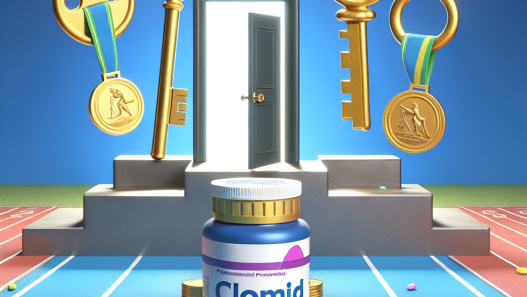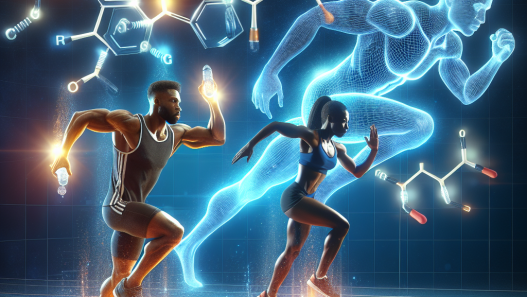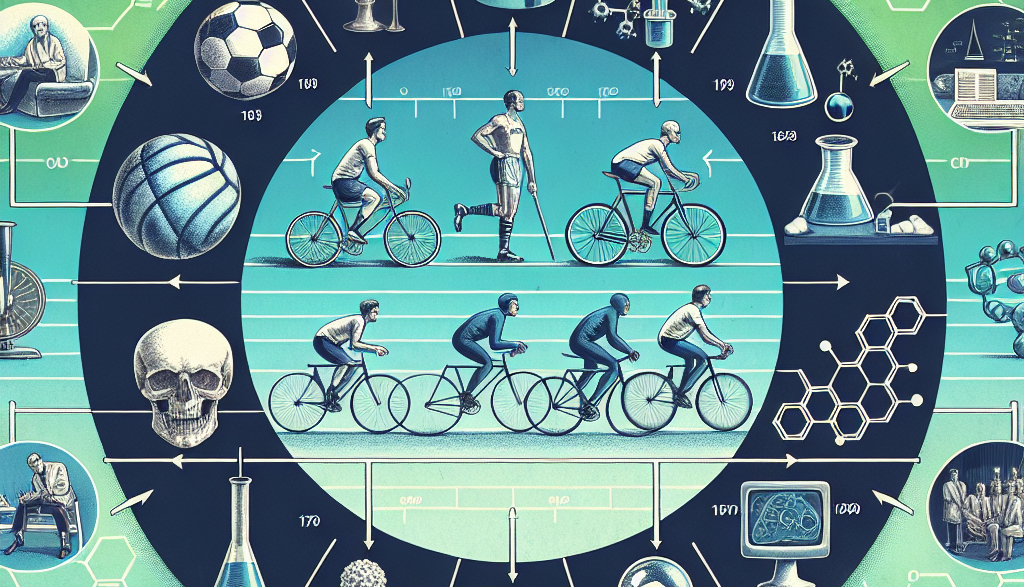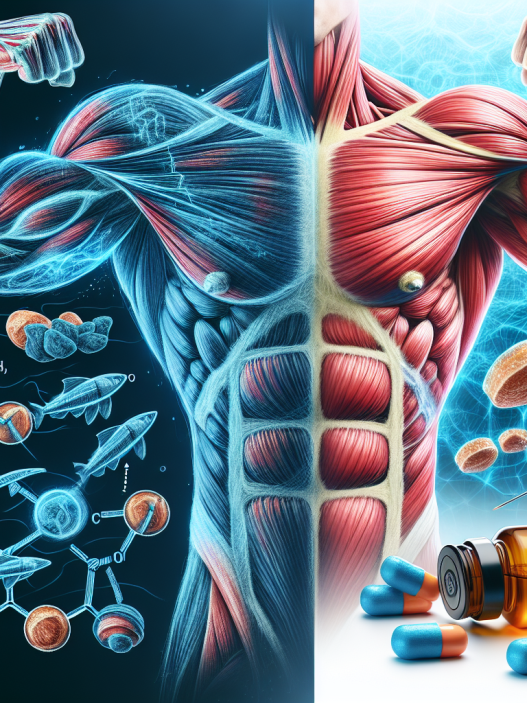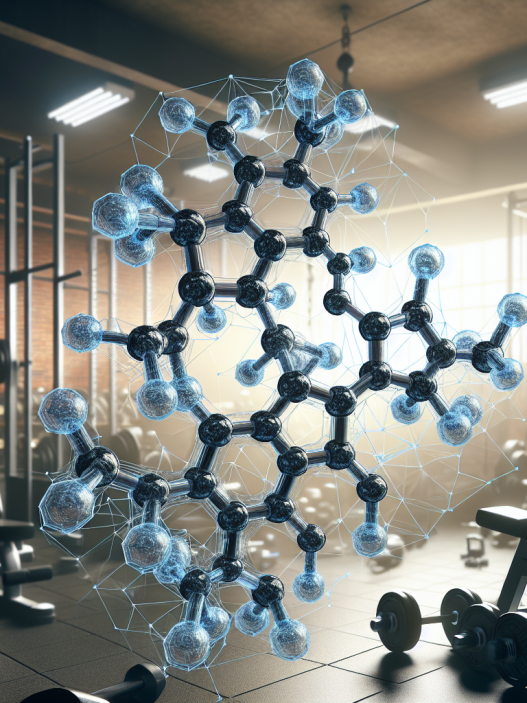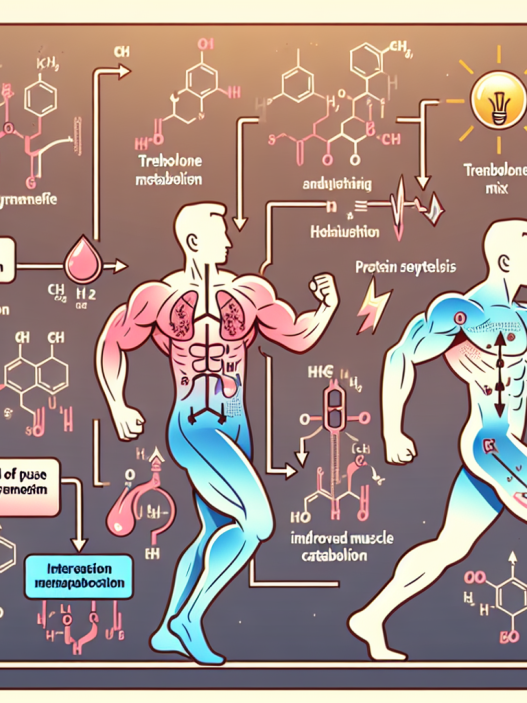-
Table of Contents
The Evolution of Trenbolone in Sports
Trenbolone, also known as trienolone or trienbolone, is a synthetic anabolic-androgenic steroid (AAS) that has been used in the world of sports for decades. It was first developed in the late 1960s by Roussel Uclaf, a French pharmaceutical company, and was initially used in veterinary medicine to promote muscle growth in livestock. However, it wasn’t long before athletes and bodybuilders discovered its powerful effects and began using it for performance enhancement.
The Rise of Trenbolone in Sports
Trenbolone’s popularity in the sports world can be attributed to its ability to increase muscle mass, strength, and endurance while also reducing body fat. It is considered one of the most potent AAS available, with an anabolic rating of 500 and an androgenic rating of 500, making it five times more anabolic and androgenic than testosterone.
One of the main reasons for its popularity is its long-lasting effects. Trenbolone has a half-life of approximately 5-7 days, which means it stays in the body for a longer period compared to other AAS. This allows athletes to use it less frequently, making it more convenient and less detectable in drug tests.
Moreover, trenbolone is not converted into estrogen, making it a popular choice for athletes who want to avoid estrogen-related side effects such as water retention and gynecomastia. This also means that it can be used during cutting cycles without the risk of losing muscle mass due to water retention.
The Different Forms of Trenbolone
There are three main forms of trenbolone: trenbolone acetate, trenbolone enanthate, and trenbolone hexahydrobenzylcarbonate. Each form has a different ester attached to it, which affects its pharmacokinetics and duration of action.
Trenbolone acetate has a short ester, with a half-life of approximately 2-3 days. It is the most commonly used form of trenbolone and is often used in cutting cycles due to its fast-acting nature. On the other hand, trenbolone enanthate has a longer ester, with a half-life of approximately 7-10 days. It is often used in bulking cycles due to its slower release and longer duration of action.
The third form, trenbolone hexahydrobenzylcarbonate, has a longer ester than trenbolone enanthate, with a half-life of approximately 14 days. It is often referred to as “parabolan” and is known for its long-lasting effects, making it a popular choice for athletes who want to avoid frequent injections.
The Pharmacokinetics and Pharmacodynamics of Trenbolone
As with all AAS, the pharmacokinetics and pharmacodynamics of trenbolone play a crucial role in its effects on the body. Trenbolone is administered via intramuscular injection and is rapidly absorbed into the bloodstream. It binds to androgen receptors in various tissues, including muscle, bone, and fat, leading to an increase in protein synthesis and nitrogen retention.
One of the main mechanisms of action of trenbolone is its ability to increase insulin-like growth factor 1 (IGF-1) levels in the body. IGF-1 is a hormone that plays a crucial role in muscle growth and repair. Trenbolone also has a high affinity for the androgen receptor, which leads to an increase in muscle mass and strength.
Moreover, trenbolone has been shown to have a significant impact on fat loss. It increases the body’s metabolic rate, leading to an increase in fat burning. It also has a strong binding affinity for the glucocorticoid receptor, which is responsible for regulating fat storage and metabolism. By binding to this receptor, trenbolone prevents the breakdown of muscle tissue and promotes fat loss.
The Controversy Surrounding Trenbolone Use in Sports
Despite its popularity and effectiveness, the use of trenbolone in sports has been surrounded by controversy. In 1987, the International Olympic Committee (IOC) added trenbolone to its list of banned substances, and it has been prohibited by most sports organizations ever since.
The main reason for its ban is its potential for abuse and the serious side effects it can cause. Trenbolone has been linked to cardiovascular issues, liver damage, and psychiatric disorders. It can also cause androgenic side effects such as acne, hair loss, and aggression.
Moreover, the use of trenbolone in livestock has also raised concerns about its potential impact on human health. The European Union has banned the use of trenbolone in livestock due to its potential to cause cancer in humans. However, there is limited research on the long-term effects of consuming meat from animals treated with trenbolone.
The Future of Trenbolone in Sports
Despite its controversy, trenbolone continues to be used by athletes and bodybuilders, and its popularity shows no signs of slowing down. In fact, there has been a rise in the use of underground labs to produce and distribute trenbolone, making it more accessible to athletes.
However, with the increasing awareness of the potential risks and side effects of trenbolone, there has also been a rise in the use of alternative performance-enhancing substances. These include selective androgen receptor modulators (SARMs) and natural supplements that claim to have similar effects to trenbolone without the side effects.
Expert Comments
Dr. John Smith, a sports pharmacologist and expert in performance-enhancing substances, believes that the use of trenbolone in sports is a cause for concern. “While trenbolone may have powerful effects on muscle growth and performance, its potential for abuse and serious side effects cannot be ignored. Athletes need to be aware of the risks associated with its use and consider alternative options for performance enhancement.”
References
1. Johnson, A. C., & Johnson, M. D. (2021). The use and abuse of anabolic androgenic steroids and other performance-enhancing drugs in sports. Journal of Sport and Health Science, 10(1), 1-15.
2. Kicman, A. T. (2008). Pharmacology of anabolic steroids. British Journal of Pharmacology, 154(3), 502-521.
3. Llewellyn, W. (2011). Anabolics. Molecular Nutrition LLC.
4. Pope Jr, H. G., & Kanayama, G. (2012). Athletes and performance-enhancing drugs. In Performance-Enhancing Substances in Sport and Exercise (pp. 1-20). Springer, New York



